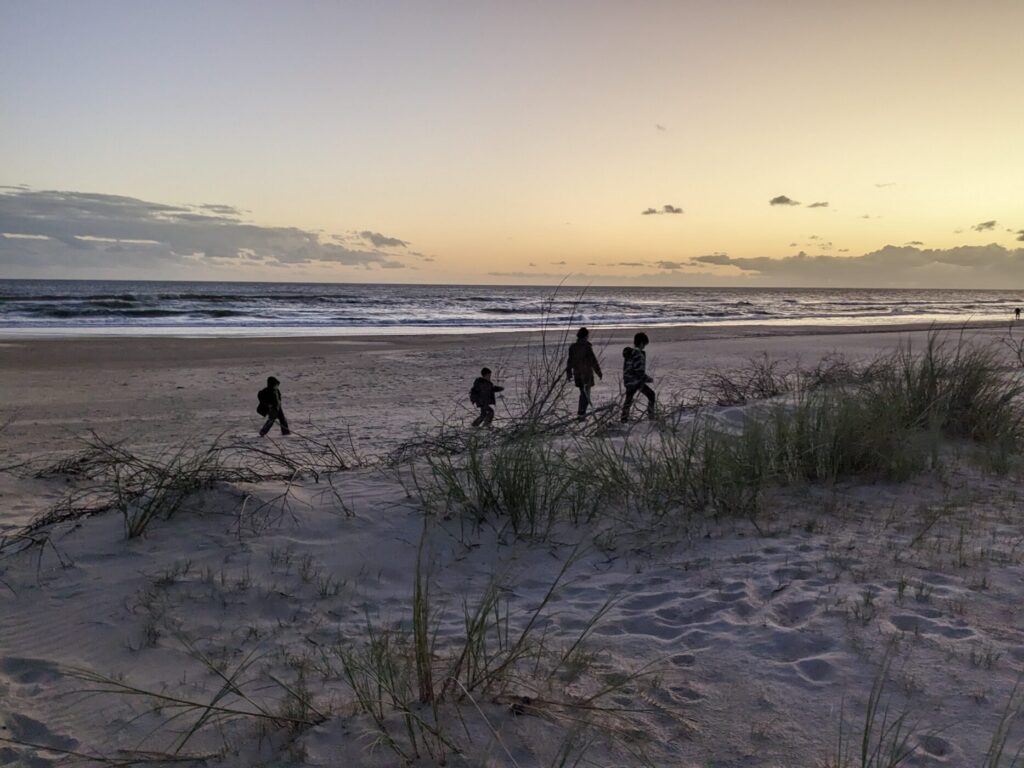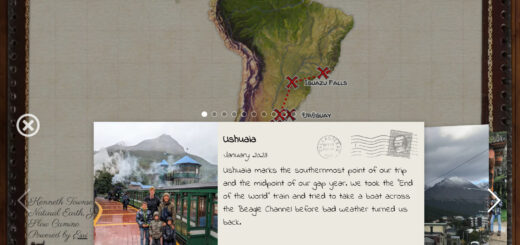Uruguay Is Probably Not on Your Bucket List. Should It Be?

Few Preconceptions
I came to Uruguay with few preconceptions. My guess is that, unless you are one of my newer readers from South America, you can’t conjure a mental image of Uruguay either. If you tried, you’d probably be wrong.
There are no songs like Brazil’s Girl from Ipanema, or landmarks like Rio de Janeiro‘s Christ the Redeemer that symbolize the place for foreigners. No region of majestic natural beauty that inspires many a television series, like Argentina’s and Chile’s Patagonia. I had to identify all the South American countries on a map in seventh grade, and I remember struggling with Uruguay. If you were to make an Uruguay-shaped pancake, you could just pour on the batter like you normally do and, as long as it wasn’t perfectly round, you’d be close enough.
By the way, when was the last time you ate at a Uruguayan restaurant?
The point is, I didn’t know what to expect. No idea.
You might be thinking preconceptions are bad. That they blind you to the real place. That they cheapen a society that will always be more complex than its symbols. But as a tourist visiting a place for two short weeks, they come in handy. They give you a baseline to compare your experience against. A way to notice things that either confirm or contradict what you think you already know.
They also help you decide whether to make a visit in the first place. In this post, I will attempt supply your imagination with a few more mental pictures. Whether you add Uruguay to your bucket list is for you to decide.
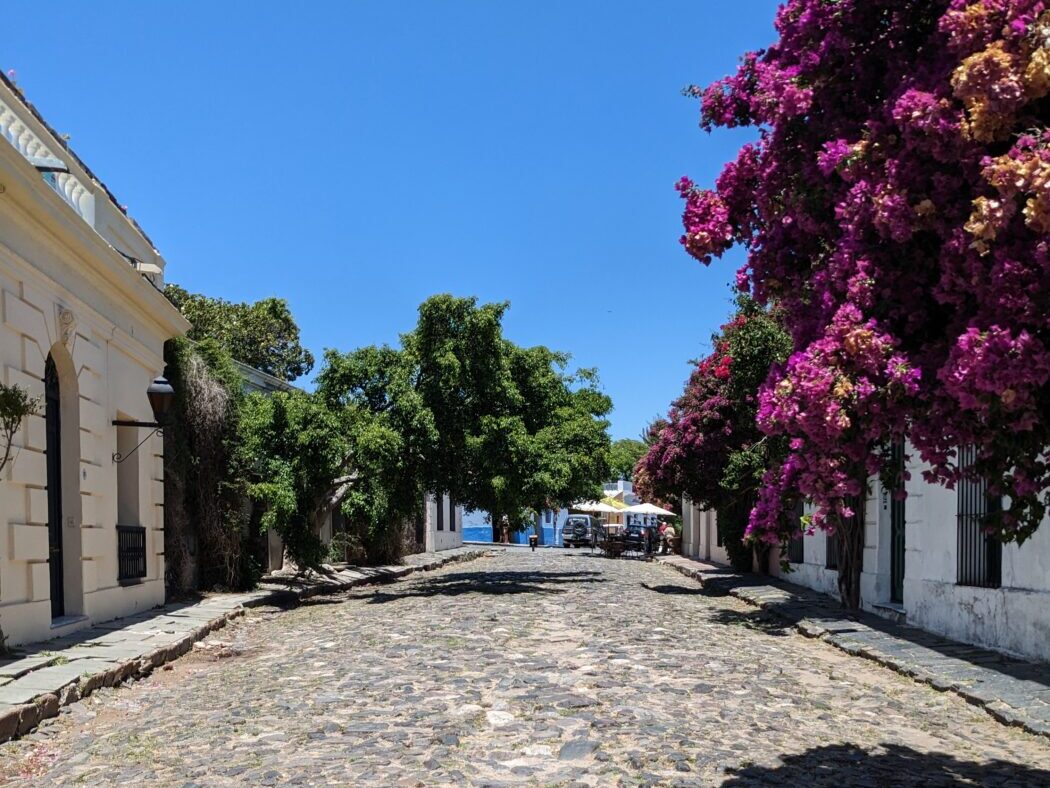
A Remarkable President
One of my first memorable encounters with Uruguay was this 2013 New York Times article. It was about former president José Mujica. Regardless of how you feel about his liberal politics, he is a remarkable character. His story got stuck in my imagination.
He is a former guerilla that served time in prison and later ascended to the presidency. He led Uruguay from 2010 to 2015. In Latin America, a former guerilla becoming president is not so unusual. Former president of Brazil, Dilma Rousseff, and, most recently, Gustavo Pedro of Colombia were also former guerillas.
What really caught my attention was his humble lifestyle. He donates most of his salary and lives on very little, even by modest standards. According to the article:
His net worth upon taking office in 2010 amounted to about $1,800 — the value of the 1987 Volkswagen Beetle parked in his garage.
Romero, Simon (2013) After Years in Solitary, an Austere Life as Uruguay’s President
He continued to live in his rundown home, eschewing the presidential mansion.
I was shocked that this was a real person I was reading about. How did he resist the pull of success, power and comfort? Is there any other leader in the world who so thoroughly embodies their message?
It led me to wonder, what kind of country makes a leader like that?
Relatively Wealthy, But Frugal
That one remarkable data point was enough to at least consider making a visit during our year-long family gap year. After all, we planned to be the neighborhood (Brazil and Argentina) and we had the time.
Another New York Times article, called What Does Sustainable Living Look Like? Maybe Uruguay, clinched it for me. Liuan and I read it while we were at Eco Caminhos Permaculture Farm in Brazil. We were already steeped in the topic of sustainability and that made us curious.
The crux of the article is this. In terms of GDP per capita, Uruguay is one of the wealthiest nations in South America. However, its carbon footprint is lower than its relative wealth would suggest.
Wedged between its larger and more routinely travelogued neighbors, Brazil and Argentina, the small Latin American country exists as something of an anomaly. With a carbon footprint hovering around the global median of 4.5 tons per capita, it falls within a narrow tier of nearly developed countries within sight of two tons per capita — the estimated amount needed to limit the world to 1.5 degrees Celsius of warming.
Shannon, Noah Gallagher (2022) What Does Sustainable Living Look Like? Maybe Uruguay
According to that same article, the United States average annual carbon output is 25 tons per person. A significant chunk of the difference has to do with the clean energy policies enacted under Mujica. But some of it has to do with cultural and lifestyle norms. I wondered, what does living on a fifth of my carbon footprint look like?
Friends Fill Us in on More Details
As our plans to visit Uruguay solidified, we met people in Brazil and Argentina that had actually been there. They filled us in on some more details.
“Uruguay is more racist than Brazil. You can just see it when you look at the people. In Brazil there is a mix of races, in Uruguay everyone is white.” I couldn’t confirm anything about the culture of racism here after a mere two weeks. But I can say European culture seems dominant.
“The main food in Uruguay is beef. There are three cows to every human,” another friend told us. Yum. Another point in favor of visiting.
“Uruguay is really expensive.” I can confirm this as well. Prices at restaurants are about the same as the United States. That’s unusual in South America.
“Uruguay is the same as Argentina. Just smaller and quieter.”
Like Argentina, But Quieter
Uruguay and Argentina have a lot in common. The accent in both countries renders the word for beach, playa, into PLOSH-ah instead of PLY-ah. Both claim tango as a native genre. Both have former and present day gauchos, drink loads of mate each day, and have similar flags featuring an anthropomorphized sun.
But compare Buenos Aires’ 15.4 million inhabitants to Uruguay’s 3.5 million — for the entire country — and you can see where the quietness comes from. Half the country’s population lives in Montevideo. Compared to Buenos Aires, the colors and architectural flourishes in Montevideo are subdued. Tourism is less. Bus drivers are more patient.
For being a country I could barely locate on a map, it felt almost boringly normal. Going from Argentina to Uruguay felt like traveling from Illinois to Wisconsin. Perfectly flat cow pastures morph into slightly hillier cow pastures.
The restaurant we stopped at on our late evening drive from Montevideo to La Paloma reminded me of the kind of place you would find in one of Wisconsin’s many lake towns where Illinoisans visit for a quiet weekend. It was clean, well-lit, and family friendly. Upscale, but not fancy. It had all the usual delights including Italian entrées, bottles of wine, ice cream and homemade pies and cakes. The final bill, $75, made our jaws drop after rarely exceeding $30 for the last several months.
Outside of the city, we encountered small bohemian beach towns. Most of the natural sights were not spectacular. But the places were only lightly visited, making for fun, stress-free experiences all the same. No worrying about our boys’ goofiness ruining someone else’s experience.
The most incredible thing we saw were the seals and sea lions at Cabo Polonio. We had to park our car and ride on a tour truck that drove over sand dunes to get there. Once there, a sign warned us to stay twenty meters from the animals and not make too much noise. Other than that, there was no barrier between us and a whole community of those enormous marine mammals. We watched for hours as they sprawled on the rocks and swam. Sometimes they fought and pushed, like sumo wrestlers playing king of the hill, until one fell off the rocks into the water.
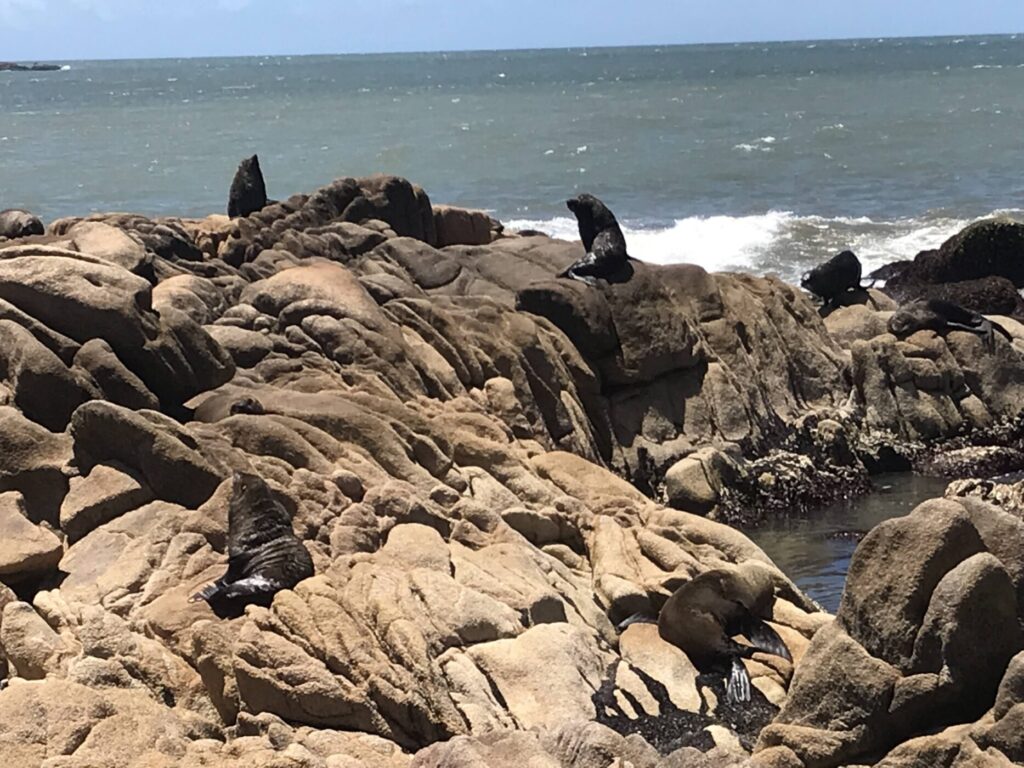
There was no fence. It was up to us to keep our distance.
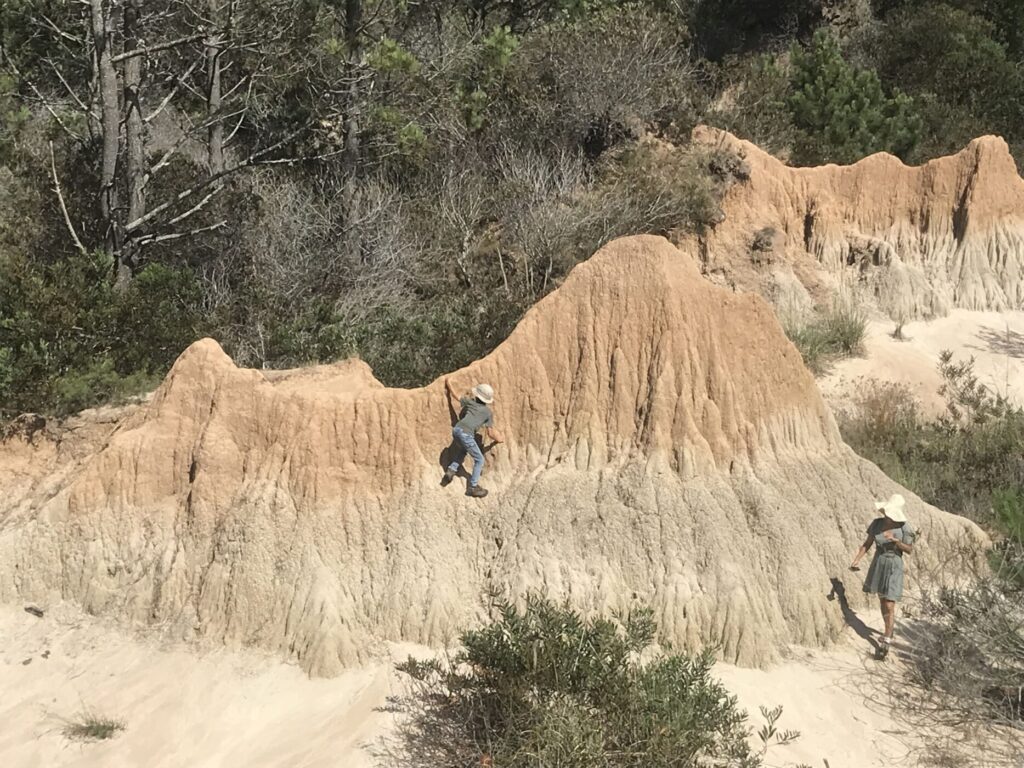
I’m not sure if Oliver should be climbing on that, but there was no one there to tell us not to.
Life In Rural Uruguay
For our first week, we stayed in a small A-frame in La Paloma. La Paloma is a small beach town a few hours east of Montevideo. The dry, windswept beach and countryside reminded me of the harsh beauty of Andalucía, Spain.
The houses were tiny by American standards. But they weren’t of the low-income mold. They were stylish. Someone paid an architect to design each one of those houses. Some were clad in wood siding, others stucco, others were made of shipping containers. They had a modern cubical aesthetic. It reminded me of a remote hippie outpost you might find on the West Coast.
Of course, with what I already knew about Uruguay’s relative wealth and low carbon footprint, this made sense. There seemed to be a cultural value on modesty. Or maybe it was just a matter of affordability? I’m no expert. In any case, house building prioritize style and frugality over hulk.
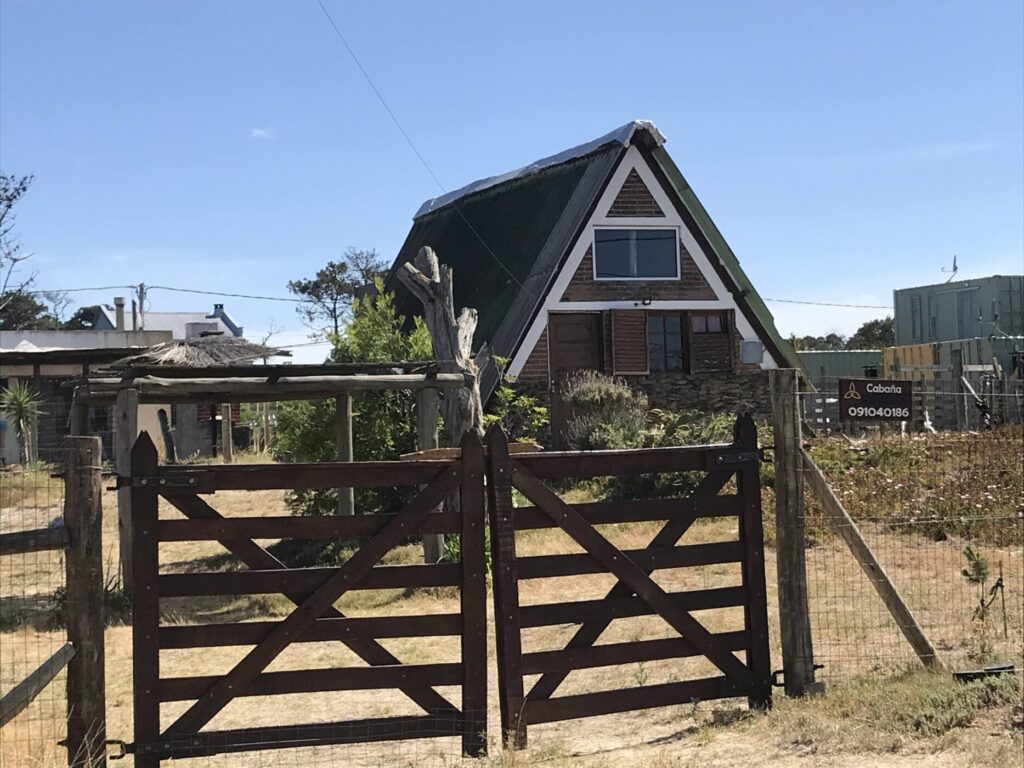
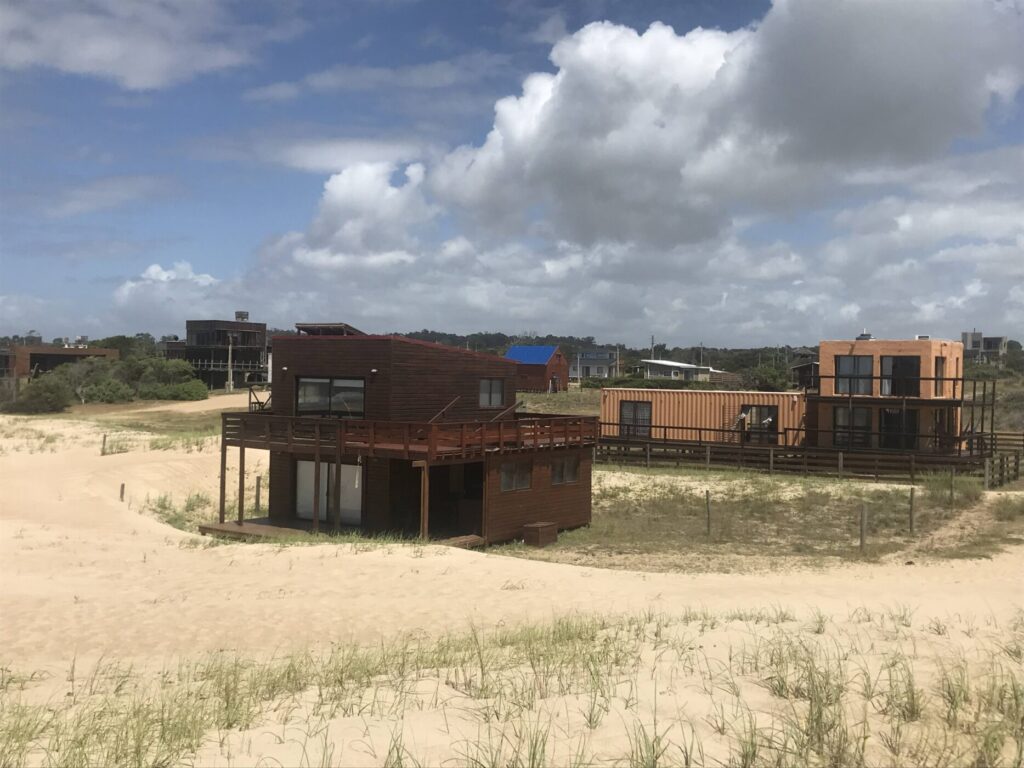
Life in Montevideo
In Montevideo our lodging was similarly miniature. We stayed in the Ciudad Vieja in a modest but well-stocked flat. It had every modern convenience. It was apparent our AirBnB hosts actually lived there and were just gone for the holidays. In other words, this was an authentic home.
By the contents of their cupboards, we could tell we would have been friends. They were foodies. The tiny kitchen presented us with neatly stacked and labeled spices, many for Asian cuisine. They had all the bakeware you could need and a high-quality French press. They were a family with kids, just like us. The rooms were crammed with toys. They had a swing installed in the hallway, of which our kids made ample use.
It seemed that they enjoyed the same professional-class lifestyle and tastes that we did. They took vacations, cooked good food, enjoyed similar pleasures. But they did it in less than half the space. Their washing machine was tucked in behind the shower. Their water heater — less than half as big as ours — was hung above the washing machine. There was no clothes dryer. We hung our wet laundry on lines suspended over the downstairs neighbors’ courtyard.
The country as a whole has undergone a transformation of their energy infrastructure, which has dramatically reduced their emissions. But it seems that individual lifestyle choices — namely living in smaller spaces that fit less stuff and don’t require as much energy to heat and cool — also play a major role.
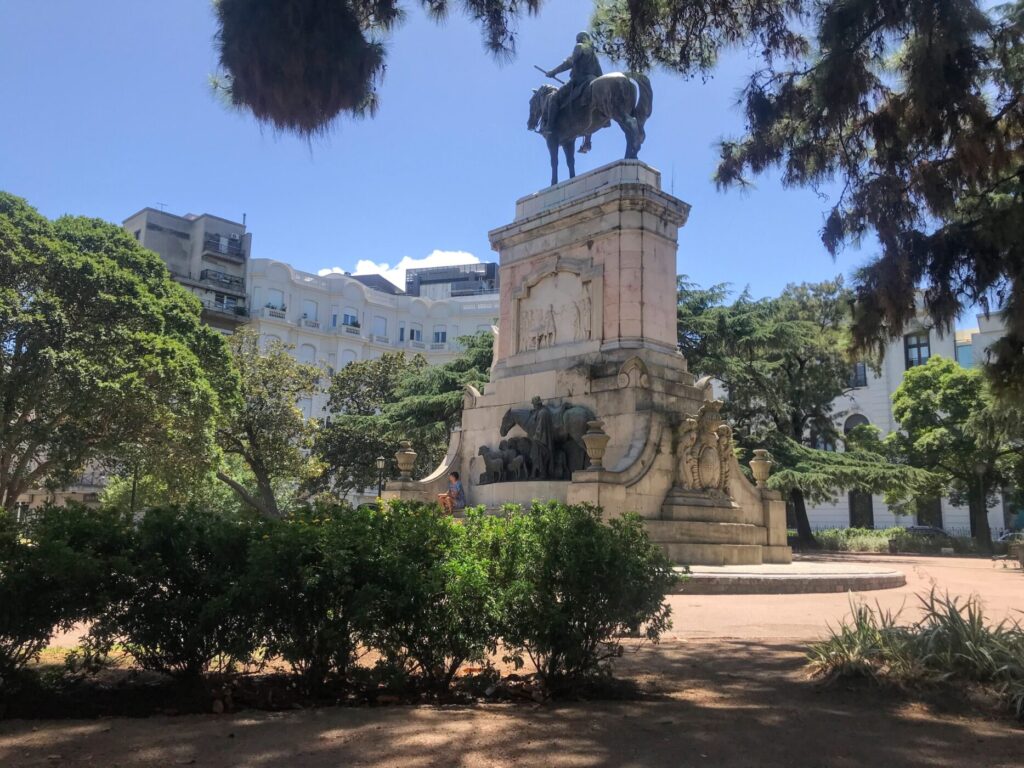
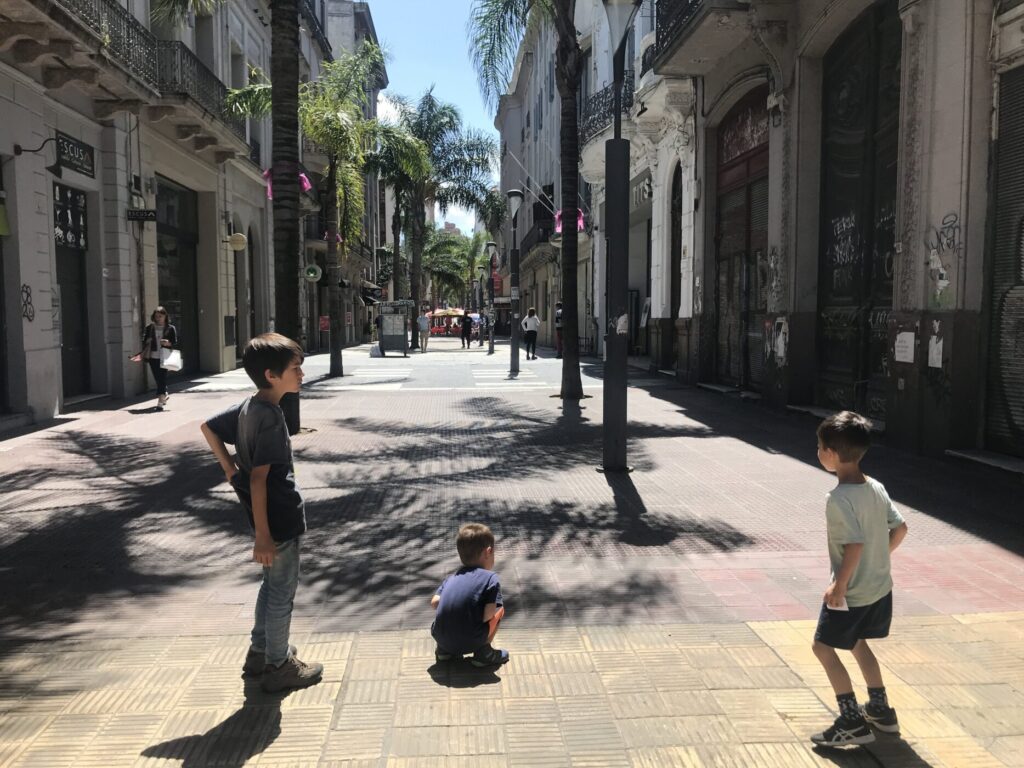
Was It Worth the Visit?
If we had two weeks vacation, I’m not sure we would pass over Brazilian’s Atlantic coast, or Brazil’s Northeastern region for that matter, to visit Uruguay. Nor would we be tempted to spend $1,600 per person for round trip flights and more than 18 hours in transit due to there being no direct flights.
If you’re into beach life, Brazil’s Ubatuba has the most beautiful coastline I’ve ever seen. For a natural spectacle, you have Iguazu falls or Torres del Paine. If nightlife is your thing, Buenos Aires probably has what you’re looking for. Uruguay isn’t even a cheap place to just bum around.
They have great infrastructure. Great WiFi. Great grass-fed beef. The buses run on time. Everyone we’ve interacted with, including the awesome Thrifty staff who drove our rental car to the ferry terminal and met us at the terminal exit, have been very nice and helpful.
In our case, we didn’t come for a lifechanging experience. We needed time to catch up on work, homeschooling, blogging, replacing some threadbare clothing, and just taking time to breathe. We previously came off of two months of volunteering at Eco Caminhos, three weeks on a whirlwind tour with Liuan’s mom, and then a two-week stint volunteering at Quinta Esencia with no time in between.
Two weeks of a modest but pleasant scenery, good WiFi, and shopping malls were exactly what we needed. I also felt I understood how they manage to use less energy than we do in the States. In summary, we got what we came for.
